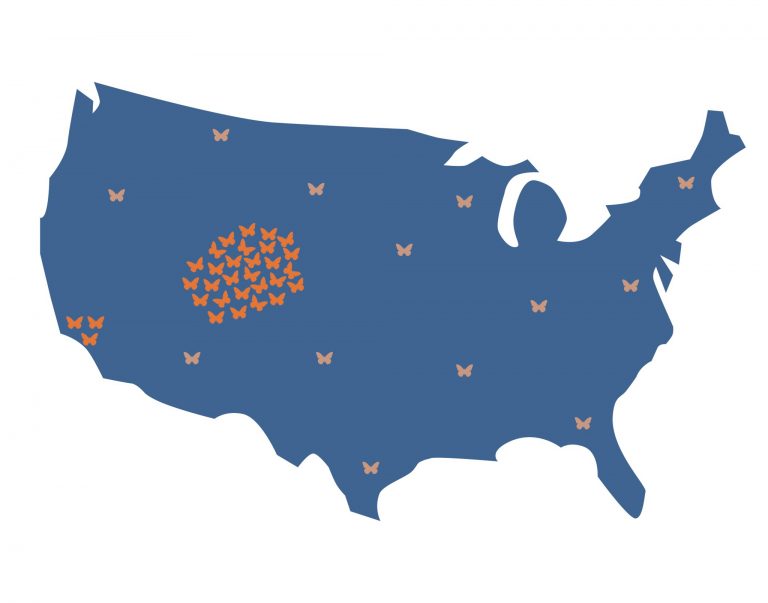
Carolina Watts
A massive 70-mile blob flew over Denver, Colorado and baffled the National Weather Service (NWS); originally, many people thought that it was an unknown species of migrating birds. After further review, experts announced that it was migrating Painted Lady butterflies, not birds picked up by the radar imagery.
Painted Ladies are often mistaken for their close relatives, Monarch butterflies. Both species appear similar and migrate annually, but the Monarch’s journey is more unique. According to the United States Forest Service, Monarchs are the only species of butterflies to make a two-way migration like birds. The Monarch’s migration is one of the largest of any insect in North America, and some of them spend winters in Santa Barbara. However, their local residence is in jeopardy.
Monarchs are unable to withstand harsh winter weather and migrate south to sites along the Pacific coast, like the Goleta Butterfly Grove on Ellwood Mesa. The butterflies roost in a variety of trees, including eucalyptus, which grows abundant in the groves. The reserve is named after Ellwood Cooper, a settler of the area in 1870, who is described as “the first American nurseryman to propagate and distribute eucalyptus seedlings on a commercial scale in California,” according to the Goleta Butterfly Grove’s website.
One of Goleta’s hidden natural gems, the Monarch Butterfly Grove has now been pronounced closed indefinitely, at least until eucalyptus trees left dead or dying in the aftermath of California’s five-year drought have been removed. After a tree health assessment this summer, the city of Goleta discovered that the drought made trees on Ellwood Mesa more vulnerable to pests than normal, causing a majority of the eucalyptus trees in the reserve to be pronounced dead or dying, according to the Grove’s website.
Since the Monarchs reached a record high population estimated at 682 million individuals in 1997, the population of monarch butterflies in the U.S. has fluctuated significantly over the past 20 years. In 1998, the population fell by over 70 percent, to just above 200 million individuals. After reaching a low of 25 million in 2014, the population recovered quickly to 150 million in 2016.
This year in Santa Barbara, only about one third of the nearly 100 monarch wintering sites actually hosted butterflies.
As climate change continues, storms are expected to increase in strength, affecting more than just humans. According to the World Wildlife Fund, deforestation and poor weather are the largest threats against Monarch butterflies’ great migration. Along with dying eucalyptus trees and loss of roosting habitats like those found in the Ellwood Monarch Butterfly Reserve, there has also been a decline of milkweed, which Monarch caterpillars eat before metamorphosis to adulthood.
Favorable weather in certain years may have helped boost the butterflies’ numbers, but herbicide and pesticide use combined with a loss in milkweed still puts the species at risk, according to the Center for Biological Diversity.
Monarchs can travel around 3,000 miles annually in their migratory path; they are the only type of butterfly capable of traveling such vast distances each year. Conservationist have labelled monarchs an indicator species, meaning the health of their species is a strong indication of the health of larger parts of the surrounding ecosystem. Monarchs are also pollinators, like bees, so they are responsible for pollinating shrubs, flowers, and food for entire ecosystems. Many other species rely on monarchs for food in a different way. Birds eat adult Monarchs, and other insects prey on caterpillars and eggs.
Ultimately, Monarch butterflies are an aesthetic and charming addition to any environment, but they also play an important role within ecosystems.
















